











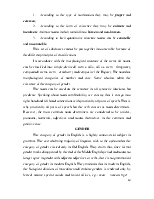
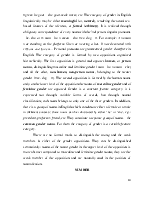
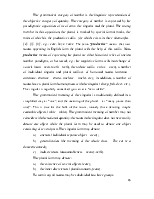
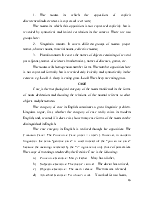
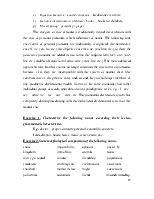
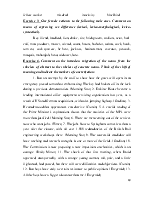
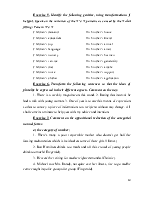
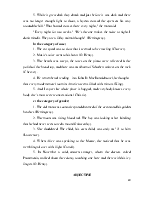
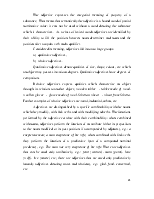

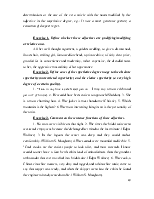
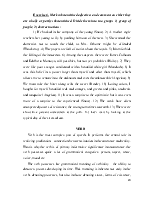
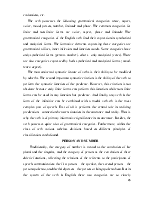
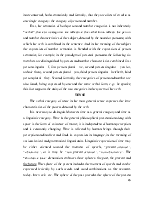
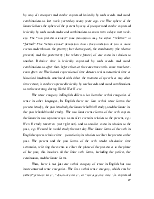
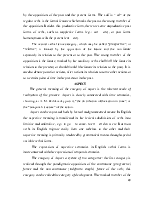
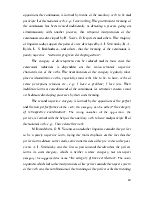
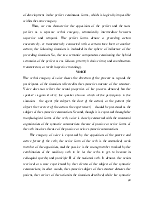
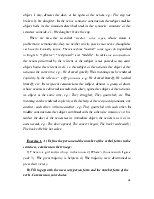

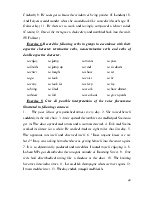
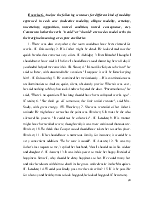
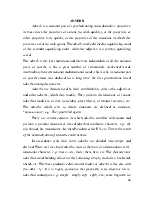
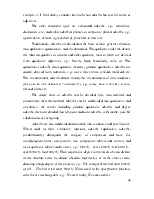
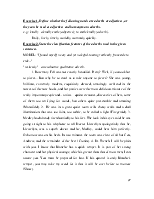
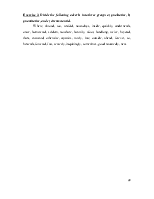
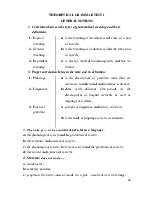
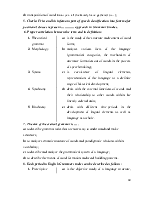
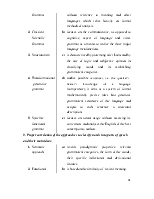
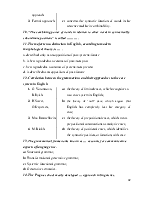
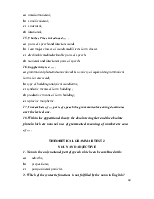
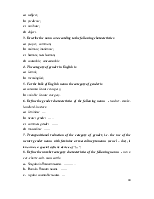
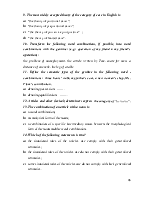
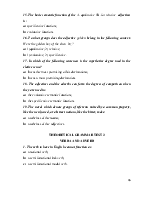
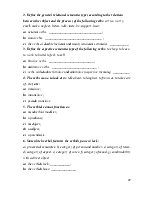

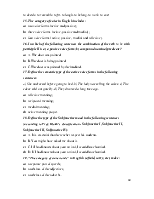
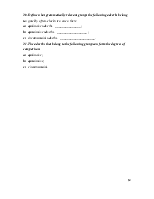
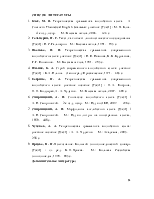
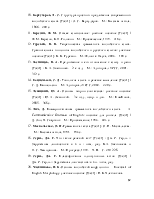

analyses various facts of the language (grammatical categories, the mechanism of utterance formation out of words in the process of speech-making); |
|
|
3. Syntax
|
c) is coexistence of lingual elements, representation of the language at a definite stage of historical development; |
|
4. Synchrony
|
d) deals with the external functions of words and their relationship to other words within the linearly ordered units; |
|
5. Diachrony
|
e) deals with different time-periods in the development of lingual elements as well as language as a whole. |
7. The aim of theoretical grammar is … .
a) to describe grammar rules that are necessary to understand and make sentences;
b) to analyze semantic structure of words and paradigmatic relations within vocabulary;
c) to describe and analyze the grammatical system of a language;
d) to describe the means of word formation and word-building patterns.
8. Each period in English Grammar studies can be described as follows:
|
1. Prescriptive Grammar |
a) is the objective study of a language structure, without reference to meaning and other languages which relies heavily on formal methods of analysis. |
|
2. Classical Scientific Grammar |
b) focuses on the communicative, as opposed to cognitive, aspect of language and views grammar as a means to realize the three major language metafunctions. |
|
3. Structuralism |
c) is characterized by patterning after Latin and by the use of logic and subjective opinion in classifying words and in establishing grammatical categories. |
|
4. Transformational-generative grammar |
d) studies possible sentences, i.e. the speaker’s-hearer’s knowledge of a language (competence); it aims at a system of formal mathematically precise rules that generates grammatical sentences of the language and assigns to each sentence a structural description. |
|
5. Systemic functional grammar |
e) focuses on actual usage without assessing its correctness and analyses the English of the best contemporary authors. |
9. Proper correlation of the approaches to classify words into parts of speech and their main ideas:
|
1. Semantic approach |
a) reveals paradigmatic properties: relevant grammatical categories, the form of the words, their specific inflectional and derivational features. |
|
2. Functional approach |
b) is based on the similarity of lexical meaning. |
|
3. Formal approach |
c) concerns the syntactic function of words in the sentence and their combinability. |
10. “The combining power of words in relation to other words in syntactically subordinate positions” is called ……… .
11. The major tense-distinction in English, according to modern morphological theory, is … .
a. described only as an opposition of past::present::future
b. is best regarded as a contrast of past::non-past
c. best regarded as a contrast of present::non-present
d. is described as an opposition of past::future
12. Correlation between the grammarians and their approaches to the case system in English:
|
1. G. Vorontsova, B.Ilyish |
a) the theory of limited cases, which recognizes a two-case system in English; |
|
2. H.Sweet, O.Jespersen, |
b) the theory of ‘null’ case, which argues that English has completely lost the category of case; |
|
3. Max Deutschbein
|
c) the theory of prepositional cases, which treats prepositional constructions as analytic cases; |
|
4. M. Blokh |
d) the theory of positional cases, which identifies the syntactic position, or function, with case. |
13. The grammatical frameworks known as … accounts for communicative aspects of language use.
a) Structural grammar;
b) Transformational-generative grammar;
c) Systemic functional grammar;
d) Generative semantics.
14. The Prague school mostly developed … approach in linguistics.
a) transformational;
b) stratificational;
c) structural;
d) functional;
15. Charles Fries introduced … .
a) parts of speech and function words
b) four major classes of words and fifteen form-classes
c) declinable and indeclinable parts of speech
d) notional and functional parts of speech
16. Suppletivity is a … .
a) grammatical phenomenon realized in a variety of equivalent grammatical forms for one word;
b) type of building analytical wordforms;
c) synthetic means of form-building ;
d) productive means of form-building;
e) replacive morpheme.
17. In members of … parts of speech the grammatical meaning dominates over the lexical one.
18. Within the oppositional theory the absolute singular
Уважаемый посетитель!
Чтобы распечатать файл, скачайте его (в формате Word).
Ссылка на скачивание - внизу страницы.